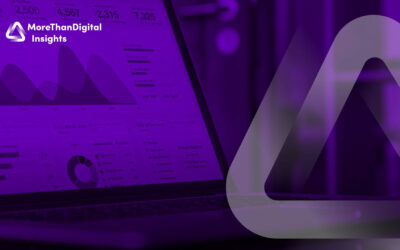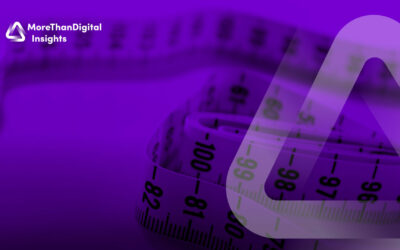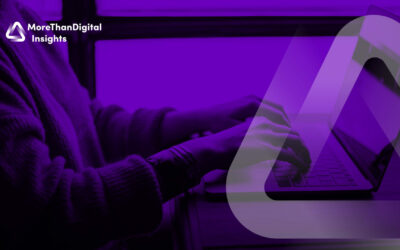If you’re a business owner, you’ve probably heard of the terms “Business Analytics” and “Business Intelligence” in different contexts. But what’s the difference between them? And which one should you be using for your business? What does it even mean? Why is everyone now talking about it? – Many questions, and we now give you all the answers you need to know as a manager.
This article will explain in detail the difference between business analytics and business intelligence, as well as give tips on which one you should use for your business.
What is Business Intelligence (BI)?
Business Intelligence (BI) is a process that extracts insights and meaning from data to help businesses make better decisions. BI is more descriptive than predictive, meaning it can tell you what has happened in the past but may not be able to say what will happen in the future.
Some of the most common methods used in BI include dashboards, scorecards, OLAP (online analytical processing), reporting (such as KPIs and metrics), and data mining. BI relies heavily on information technology (IT) to manage and organize data and provide users with the tools they need to analyze it.
One of the key benefits of using BI is that it can help businesses identify trends and patterns in their data. This can allow them to make better decisions, from product development to marketing strategy. BI can also help managers track the performance of their organization against specific goals or targets, which can then be used to improve operations.
Types of questions answered by Business Intelligence:
- What …?
- When …?
- Who… ?
- How many …?
Some everyday use cases for BI include:
- Analyzing customer behavior to determine what products they are most likely to buy
- Tracking website traffic to identify which marketing campaigns are most successful
- Monitoring social media sentiment to see how customers feel about the company’s products or services
- Analyzing financial data to make decisions about future investments
What is Business Analytics (BA)?
Business analytics (BA) analyzes existing data to make better decisions and make predictions based on this data. It involves using Business Intelligence (BI) tools like data mining techniques, statistical analysis, and modeling to understand past performance and predict future outcomes. BA can be used in various industries, including finance, healthcare, manufacturing, and retail.
One of the main benefits of business analytics is that it can help organizations identify trends and patterns in their data. This can help them make better data-driven management decisions about pricing, product development, and marketing. Businesses can also help organizations optimize their operations by identifying areas where they can improve efficiency or reduce costs.
Business analytics is typically performed by a team of skilled analysts in data mining, statistics, and modeling. The team will analyze the data to identify trends and patterns and develop recommendations based on their findings. The recommendations will be presented to executives or other decision-makers, who will decide what actions to take.
Types of questions answered by Business Analytics:
- What will happen?
- What happens if szenario X, Y, Z?
- What happens next?
- What could be the impact?
Some typical applications of Business Analytics in Business:
- Forecasting future sales or trends
- Identifying customer segments and targeting marketing campaigns accordingly
- Optimizing pricing strategies
- Detecting fraudulent activity
- Improving operational efficiency
What is the difference between Business Intelligence (BI) and Business Analytics (BA)?
The main difference between business intelligence (BI) and business analytics (BA) is that BI focuses more on descriptive analytics, while BA focuses more on predictive analytics. Descriptive analytics describes what has happened in the past, while predictive analytics uses historical data to predict what might happen in the future.
Another difference is that BI focuses more on reporting and data visualization, while business analytics focuses more on analysis and decision-making. BI tools can be used to create reports and graphs that show how a company is performing or how different aspects of the business are doing. Business analytics tools can be used to dig deeper into the data to find trends and correlations that may not be visible in summary reports. This information can then be used to make better data-driven decisions about how to run the business.
This means that BI is better for understanding what has already happened, while BA can be used to make better decisions about what might happen in the future. For example, BI might be used to track website traffic to see which marketing campaigns are most successful, while BA might predict how much traffic a website will get in the future based on past data.
Another difference between BI and BA is that BI is often used for operational decisions, while BA is more often used for strategic decisions and strategic planning. Operational decisions affect how a company runs on a day-to-day basis, while strategic decisions affect the company’s long-term direction.
Conclusion
Business intelligence (BI) and business analytics (BA) are two fundamental aspects of data-driven decision-making. BI is more focused on descriptive analytics, which describes what has happened in the past. BA is more focused on predictive analytics, which uses historical data to predict what might happen in the future. Another difference is that BI is more focused on reporting and data visualization, while BA is more focused on analysis and decision-making. This information can then be used to make better data-driven decisions about how to run the business.
BI and BA are essential for making sound decisions, but it’s important to understand the differences between them so you can use the right tool for the right job. If you need help deciding which one to use, start with BI and move to BA when you need to get a little more sophisticated with your predictions.






